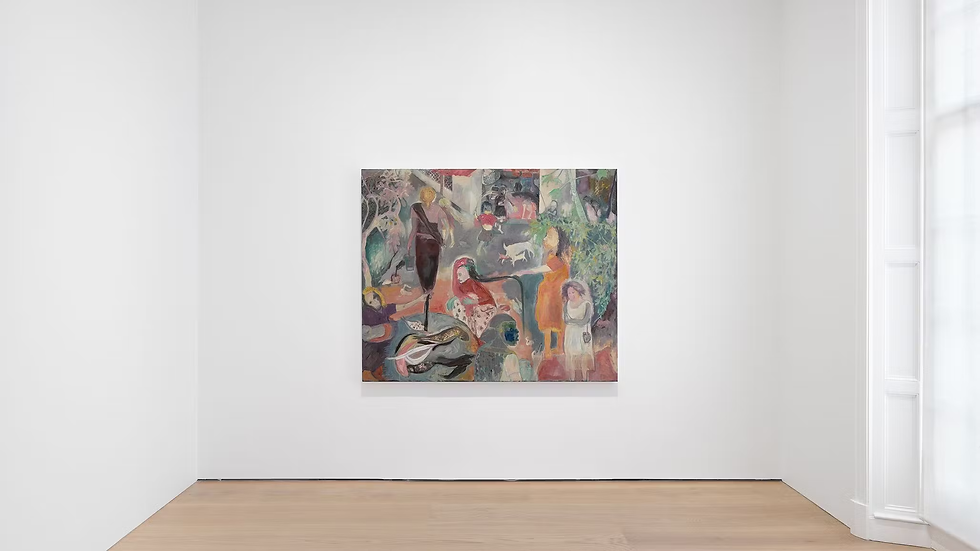VISUAL HISTORIES IN A WATERY LAND: SOSA JOSEPH’S ‘PENNUNGAL: LIVES OF WOMEN AND GIRLS’ AT DAVID ZWIRNER
- Tanya Mascarenhas
- Sep 6, 2024
- 3 min read
There is an intimacy evoked upon viewing each canvas of Sosa Joseph's Pennugal: Lives of Women and Girls as the viewer catches a glimpses scenes taken from the artist’s own memory, a window into a life unknown to us. writes Tanya Mascarenhas.

Installation shots courtesy of gallery
Sosa Joseph’s solo exhibition Pennungal: Lives of women and girls at David Zwirner combines distinct and captivating elements that create an overall picture of the artist’s family, memories and the natural world with water as a central theme. There are 14 paintings on display, all made between 2023-2024. The exhibition’s title, Pennungal, means ‘women’ in Malayalam, which is Sosa’s mother language, drawing on the exhibition’s presentation of womanhood and developing a sense of identity and finding oneself in a society concealed by the river Pamba. Sosa’s heritage stems from a village called Parumala, a village in the Kuttanad region in Kerala that is dense with wetlands and water bodies. Flooding during monsoons is frequent, and there are defining features such as four rivers and paddy fields that contribute to its watery feel. To live and survive in such an environment presents its challenges, which are translated in Sosa’s own unique visual language. The presentation of womanhood appears abundant, holding a water-like capacity to flow into a way of life or being.
Upon entering the exhibition space and viewing the paintings for the first time, one becomes immersed in images of people melded together in a liquid fashion. Stories unfold together, with each canvas flowing with colour, form and movement. The sense of unity evoked between painting and viewer allows for a visual form of mediation: colours wash over the viewer and permeate deep into the senses. The exhibition’s central piece, Girls learning to find eggs inside hens (2023-2024), references a village scene and presents an image of a grandmother, standing out starkly with her ivory white outfit surrounded by young girls learning to find eggs inside chickens. The grandmother appears as a teacher, or wise figure that passes down knowledge to generations, not only of finding eggs in chickens but learning life skills, both useful but also potentially limiting in a way that sustains balance.
Joseph creates an intimacy between painting and viewer, drawing the gaze deep into the image as we attempt to make sense of the scene unfolding: as the eye moves around the canvas, more stories unfold in a cornucopia of forms. This allows for Joseph to project her familial narratives in a way that is as delicate as flowing water, yet powerful in meaning.
The images on the canvases allow for a proto-synaesthesia to take place in which colours evoke sounds that simultaneously echo the present, past and future. There is an intimacy evoked upon viewing each canvas as the viewer catches a glimpses scenes taken from the artist’s own memory, a window into a life unknown to us. The images present a visual motif that echoes seminal points in the artist’s own journey, in the hope that we can connect with her stories as they unfold. Learning and understanding these images is strengthened by the frequency of viewing: as one moves around the exhibition space, each piece speaks to the other to form a bigger picture. The figures eventually become one with a river as a sacred force. Where may it transport us to next? The stages in a lifelong journey continue to flow on, to an eternity surrounded by water.
Tanya Mascarenhas is an artist and writer currently studying her MA in Art History. She is interested in the contemporary art market and is an aspiring art critic.



